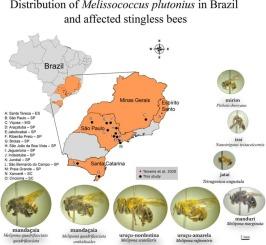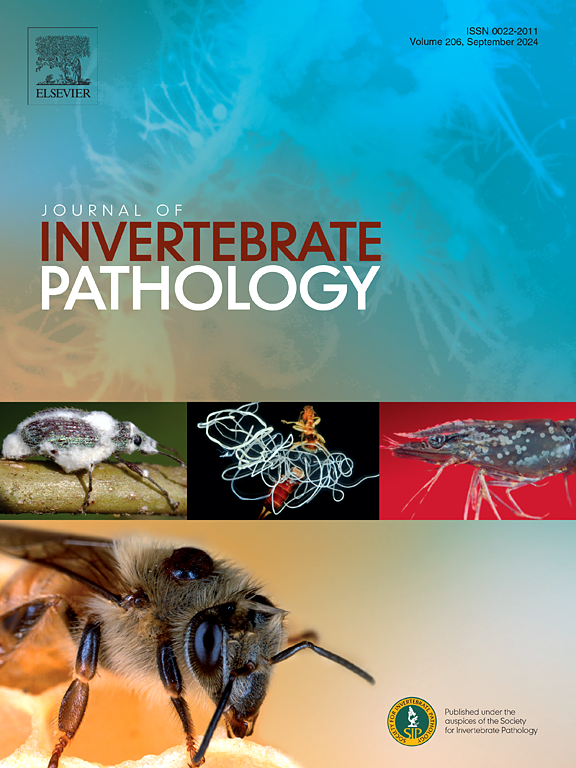Detection and identification of Melissococcus plutonius in stingless bees (Apidae: Meliponini) from Brazil
IF 2.4
3区 生物学
Q1 ZOOLOGY
引用次数: 0
Abstract
European Foulbrood (EFB), caused by the bacterium Melissococcus plutonius, primarily affects young bee larvae, which may lead to colony decline. Once thought to affect only western honey bee Apis mellifera, EFB is now spreading to other bee species in Brazil. We identified EFB and detected M. plutonius in 10 species of stingless bees (Meliponini, Apidae) across the States of Minas Gerais, São Paulo, and Santa Catarina, including new cases in Partamona helleri, Plebeia droryana, Melipona quadrifasciata quadrifasciata, Nannotrigona cfr. testaceicornis, and Tetragonisca angustula. The bacterium M. plutonius was also detected in larval food, honey, pollen, and other materials from the colonies of some stingless bee species, as well as in A. mellifera honey from colonies adjacent to stingless bee colonies, suggesting the rearing environment aids bacterial transmission. Our study highlights the need for ongoing surveillance and strict management practices, as no effective treatment exists in Brazil.

巴西无刺蜂(蜜蜂科)中深蜂美利球菌的检测与鉴定
欧洲臭蜂病(European Foulbrood, EFB)是一种由美利索球菌(Melissococcus plutonius)引起的疾病,主要影响年幼的蜜蜂幼虫,可能导致蜂群数量下降。EFB曾经被认为只影响西方蜜蜂,现在它正在蔓延到巴西的其他蜜蜂物种。在美国米纳斯吉拉斯州、圣保罗州和圣卡塔琳娜州的10种无刺蜜蜂(蜂科,蜂科)中鉴定出了EFB,并检出了plutonius,其中包括新发现的帕塔莫纳·赫莱利蜂、德罗亚娜蜂、四棱蜂和南棱蜂。龙眼和龙眼。在一些无刺蜜蜂的幼虫食物、蜂蜜、花粉等物质中,以及无刺蜜蜂相邻菌落的蜂蜜中,也检测到plutonius分枝杆菌,表明饲养环境有利于细菌的传播。我们的研究强调了持续监测和严格管理实践的必要性,因为巴西没有有效的治疗方法。
本文章由计算机程序翻译,如有差异,请以英文原文为准。
求助全文
约1分钟内获得全文
求助全文
来源期刊
CiteScore
6.10
自引率
5.90%
发文量
94
审稿时长
1 months
期刊介绍:
The Journal of Invertebrate Pathology presents original research articles and notes on the induction and pathogenesis of diseases of invertebrates, including the suppression of diseases in beneficial species, and the use of diseases in controlling undesirable species. In addition, the journal publishes the results of physiological, morphological, genetic, immunological and ecological studies as related to the etiologic agents of diseases of invertebrates.
The Journal of Invertebrate Pathology is the adopted journal of the Society for Invertebrate Pathology, and is available to SIP members at a special reduced price.

 求助内容:
求助内容: 应助结果提醒方式:
应助结果提醒方式:


